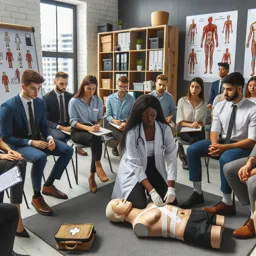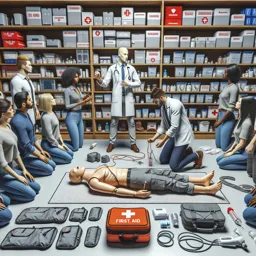What Is Workplace First Aid?
Workplace first aid refers to the immediate care and assistance given to anyone suffering a minor or major injury or illness at work before professional medical help arrives. It serves as a crucial first step in minimizing the impact of accidents and can even save lives in emergency situations.
Why Is First Aid Important at Work?
- Rapid Response: Immediate action can prevent injuries from worsening and reduce recovery time.
- Legal Compliance: Many regions require businesses to provide first aid facilities and training.
- Boosts Morale: Employees feel safe knowing their employer prioritizes their well-being.
Essential Components of a Workplace First Aid Kit
A well-stocked first aid kit is vital for any workplace. While kit contents may vary based on the nature of the work, a typical kit should include:
- Adhesive bandages and sterile gauze pads
- Antiseptic wipes and ointments
- Adhesive tape and scissors
- Disposable gloves
- CPR face shield or pocket mask
- Burn creams and cold packs
- Eye wash and eye dressings
- First aid manual
Key First Aid Protocols for Common Workplace Incidents
1. Bleeding and Wounds
Apply pressure using a clean cloth to stop the bleeding. Elevate the injured part and seek medical attention for deep or severe wounds.
2. Burns
Cool the burn under running water for at least 10 minutes. Cover with a sterile dressing and do not apply creams or ointments without medical advice.
3. Sprains and Fractures
Immobilize the affected area and apply a cold pack to minimize swelling. Seek professional medical assessment.
4. Choking
Encourage the person to cough. If they cannot breathe, perform abdominal thrusts (Heimlich maneuver) and call for emergency assistance.
Training and Preparedness
Regular first aid training for employees is essential. Sessions should teach how to use the kit, assess injuries, and perform basic life support. Conduct regular drills to ensure quick responses during real emergencies.
Creating a Culture of Safety
Encouraging open communication, identifying workplace hazards, and displaying clear emergency procedures helps foster a proactive approach to safety. Everyone should know the location of first aid kits and who to contact in an emergency.
Conclusion
Workplace first aid readiness significantly contributes to a safer, healthier work environment. By maintaining prepared kits, growing awareness, and investing in training, businesses can minimize risk and promote a caring workplace culture.




























